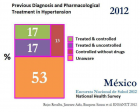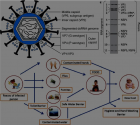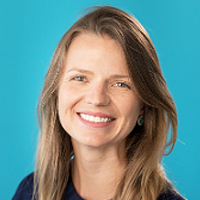Abstract
Research Article
In vitro and preventative field evaluations of potential biological control agents and synthetic fungicides for control of Clarireedia jacksonii sp. nov.
Robert A Kerr*, Jeffery W Marvin, Lambert B McCarty, William C Bridges, S Bruce Martin and Christina E Wells
Published: 06 February, 2020 | Volume 4 - Issue 1 | Pages: 001-008
Clarireedia jacksonii sp. nov. Formerly Sclerotinia homoeocarpa F.T. Bennett, the causal agent of dollar spot (DS), is the most destructive pathogen in turfgrass. Symptoms appear as circular patches 10-40 mm in diameter with small tan lesions surrounded by a darker band, sometimes presenting an hour glass appearance. A multi-year study was initiated with the objective of determining the efficacy of biological control agents (BCA) and tank mixes of BCA’s and synthetic fungicides on DS control. Nutrient source was also evaluated to determine any interaction with the BCA’s and tank mixes. in vitro studies evaluated the efficacy of synthetic and BCA’s for C. jacksonii control. Quarter strength potato dextrose agar was amended with ¼, ½ and full labeled rates of various products. Chlorothalonil at all rates provided greatest (> 90%) control of C. jacksonii for study duration. Biological control agents provided best efficacy at ¼ and ½ label rates. Streptomyces griseoviridis provided least efficacy and may have exacerbated formation of C. jacksonii. Preventative field evaluations for synthetic and BCA’s provided different results between two study years. In Year 1, all treatments had < 15% disease severity for the duration of the study. In year 2, disease pressure was extremely elevated. Synthetic program 1, centered on azoxystrobin + propiconazole applications and conventional fertility sources, provided best results with < 5% disease severity for the duration of the study. Reduced synthetic program 1, and synthetic program 2 followed closely with < 10% disease severity. Reduced synthetic programs were based on monthly applications of either chlorothalonil or pyraclostrobin every 30 day, alternated with biofungicide applications. Synthetic program 2 utilized rotation applications of pyraclostrobin and chlorothalonil every 14 days. Organic programs, utilizing only biofungicides and organic fertility sources, provided the least amount of control and exceeded the 15% threshold by the second month of the evaluation period.
Read Full Article HTML DOI: 10.29328/journal.jpsp.1001043 Cite this Article Read Full Article PDF
Keywords:
AUDPC: Area Under Disease Progress Curve; BCA: Biological Control Agents; BL: Bacillus licheniformis SB 3086; BS: Bacillus subtilis QST 713; DDi: Distilled De-ionized; DS: Dollar Spot; DSC: Dose Response Curve; EO: Essential oils; ETP: Epipolythiodioxopiperazine; LSD: Least Significant Difference; PDA: Potato Dextrose Agar; SG: Streptomyces griseoviridis; TH: Trichoderma harzianum
References
- Bishop P, Sorochan J, Ownley BH, Samples TJ, Windham AS, et al. Resistance of to Sclerotinia homoeocarpa to Iprodione, Propiconazole, and Thiophanate-Methyl in Tennessee and Northern Mississippi. Crop Science. 2008; 48: 1615-1620.
- Salgado-Salazar C, Beirn LA, Ismaiel A, Boehm MJ, Carbone I, et al. Clarireedia: A new fungal genus comprising four pathogenic species responsible for dollar spot disease of turfgrass. Fungal biology. 2018; 122: 761-773. PubMed: https://www.ncbi.nlm.nih.gov/pubmed/30007427
- Smiley RW, Dernoeden PH, Clarke BB. Compendium of Turfgrass Diseases 3rd Edition. APS Press. 1983.
- Schisler DA, Slininger PJ, Behle RW, Jackson MA. Formulation of Bacillus spp. for biological control of plant diseases. Phytopathology. 2004; 94: 1267-1271. PubMed: https://www.ncbi.nlm.nih.gov/pubmed/18944465
- Krishna G, Pande S, Harish S. Evaluation of essential oils and their components for broad-spectrum antifungal activity and control of late leaf spot and crown rot diseases in peanut. Plant Diseases. 2007; 91: 375-379. PubMed: https://www.ncbi.nlm.nih.gov/pubmed/30781177
- Chauhan A, Ranjan A, Jindal T. Biological control agents for sustainable agriculture, safe water and soil health. Paradigms in Pollution Prevention. 2018; 71-83.
- Agrios GN. Plant Pathology 5th Edition. Elsevier Academic Press, 2005.
- Stockwell VO, Stack JP. Using Pseudomonas spp. for integrated biological control Phytopathology. 2007; 97: 244-249. PubMed: https://www.ncbi.nlm.nih.gov/pubmed/18944382
- Kim J, Le KD, Yu NH, Kim JI, Kim JC, et al. Structure and antifungal activity of pelgipeptins from Paenibacillus elgii against phytopathogenic fungi. Pesticide Biochemistry and Physiology. 2020; 163: 154-163. PubMed: https://www.ncbi.nlm.nih.gov/pubmed/31973853
- Dunlap CA. Taxonomy of registered Bacillus spp. strains used as plant pathogen antagonists. Biological control. 2019; 134: 82-86.
- Perez-Garcia O, Escalante FM, de-Bashan LE, Bashan Y. Heterotrophic cultures of microalgae: metabolism and potential products. Water research. 2011; 45: 11-36. PubMed: https://www.ncbi.nlm.nih.gov/pubmed/20970155
- Jayaraj J, Radhakrishnan NV, Kannan R, Sakthivel K, Suganya D, et al. Development of new formulations of Bacillus subtilis for management of tomato damping-off caused by Pythium aphanidermatum. Biocontrol Science and Technology. 2005; 15: 55-65.
- Heydari A, Pessarakli M. A review on biological control of fungal plant pathogens using microbial antagonists. Journal of Biological Sciences. 2010; 10: 273-290.
- Mukherjee PK, Horwitz BA, Kenerly CM. Secondary metabolism in Trichoderma – a genomic perspective. Microbiology. 2012; 158: 35-45. PubMed: https://www.ncbi.nlm.nih.gov/pubmed/21998165
- Harman GE. Overview of mechanisms and uses of Trichoderma spp. Phytopathology. 2006; 96: 190-194. PubMed: https://www.ncbi.nlm.nih.gov/pubmed/18943924
- Punja ZK, Yip R. Biological control of damping-off and root rot caused by Pythium aphanidermatum on greenhouse cucumbers. Canadian Journal of Plant Pathology. 2003; 25: 411-417.
- Coelho L, Reis M, Guerrero C, Dionísio L. Use of organic composts to suppress bentgrass diseases in Agrostis stolonifera. Biological Control. 2020; 141: 104154.
- Olanya OM, Larkin RP. Efficacy of essential oils and biopesticides on Phytophthora infestans suppression in laboratory and growth chamber studies. Biocontrol Science and Technology. 2006; 16: 901-917.
- Kabbage M, Piotrowski JS, Thill E, Westrick NM, Ralph J, et al. Poacic acid suppresses dollar spot and snow mould in amenity turfgrass. Plant Pathology. 2020; 69: 112-119.
- Latin R. A Practical Guide to Turfgrass Fungicides. APS Press. 2011.
- Morris KN, Shearman RC. NTEP turfgrass evaluation guidelines. National Turfgrass Evaluation Program, 1999.
- Hodges CF, Campbell DA, Christians N. Evaluation of Streptomyces for Biocontrol of Bipolaris sorokiniana and Sclerotinia homoeocarpa on the Phylloplane of Poa pratensis. Journal of phytopathology. 1993; 139: 103-109.
- Lo CT, Nelson EB, Hayes CK, Harman GE. Ecological studies of transformed Trichoderma harzianum Strain 1295-22 in the rhizosphere and on the phylloplane of creeping bentgrass. Phytopathology. 1998; 88: 129-136. PubMed: https://www.ncbi.nlm.nih.gov/pubmed/18944981
- Lo CT, Nelson EB, Harman GE. Improved biocontrol efficacy of Trichoderma harzianum 1295-22 for foliar phases of turf diseases by use of spray applications. Plant Diseases. 1997; 81: 1132-1138. PubMed: https://www.ncbi.nlm.nih.gov/pubmed/30861707
- Jacobsen BJ, Zidack NK, Larson BJ. The role of Bacillus-based biological control agents in integrated pest management systems: Plant Diseases. Phytopathology. 2004; 94: 1272-1275. PubMed: https://www.ncbi.nlm.nih.gov/pubmed/18944466
- Grant JA, Rossi FS. Long-term Evaluation and Improvement of Golf Turf Management Systems with Reduced Chemical Pesticide Inputs: 2006 Preliminary Report. 2006
Similar Articles
Recently Viewed
-
Association Between Electrocardiographic Abnormalities and In-Hospital Adverse Outcome in COVID-19 PatientsAnjuman Begum*, Wadud Chowdhury, Suman KS, Arnab KC, Md. Akteruzzaman, Barua Sushanta. Association Between Electrocardiographic Abnormalities and In-Hospital Adverse Outcome in COVID-19 Patients. J Cardiol Cardiovasc Med. 2024: doi: 10.29328/journal.jccm.1001196; 9: 148-152
-
Texture of Thin Films of Aluminum Nitride Produced by Magnetron SputteringStrunin Vladimir Ivanovich,Baranova Larisa Vasilievna*,Baisova Bibigul Tulegenovna. Texture of Thin Films of Aluminum Nitride Produced by Magnetron Sputtering. Int J Phys Res Appl. 2025: doi: 10.29328/journal.ijpra.1001106; 8: 013-016
-
Prevalence and Correlation between HbA1c Control and Duration of Diabetes with Blindness in the Eastern Part of Libya: Double Centers StudyKhalid AK Elmajri*, Abdolmejed Fathy. Prevalence and Correlation between HbA1c Control and Duration of Diabetes with Blindness in the Eastern Part of Libya: Double Centers Study. Int J Clin Exp Ophthalmol. 2024: doi: 10.29328/journal.ijceo.1001058; 8: 021-025
-
Reliability and Diagnostic Performance of Transient Hepatic Elastography in Chronic Hepatitis C during the Training PhaseAppel F*, Ercolin S, Monteiro MM, Lomes N, Uehara S, Emori CT, Nunes EJS, El Bacha I, Oliveira AC, Feldner ACCA, Silva ISS, Silva AEB, Ferraz MLG, Parise ER, Carvalho-Filho RJ. Reliability and Diagnostic Performance of Transient Hepatic Elastography in Chronic Hepatitis C during the Training Phase. Ann Clin Gastroenterol Hepatol. 2024: doi: 10.29328/journal.acgh.1001047; 8: 021-027
-
Budesonide – Oral Galenic Formulations for Crohn DiseaseLuisetto M, Mashori GR, Cabianca L, Latyshev OYU. Budesonide – Oral Galenic Formulations for Crohn Disease. Ann Clin Gastroenterol Hepatol. 2024: doi: 10.29328/journal.acgh.1001048; 8: 028-033
Most Viewed
-
Evaluation of Biostimulants Based on Recovered Protein Hydrolysates from Animal By-products as Plant Growth EnhancersH Pérez-Aguilar*, M Lacruz-Asaro, F Arán-Ais. Evaluation of Biostimulants Based on Recovered Protein Hydrolysates from Animal By-products as Plant Growth Enhancers. J Plant Sci Phytopathol. 2023 doi: 10.29328/journal.jpsp.1001104; 7: 042-047
-
Sinonasal Myxoma Extending into the Orbit in a 4-Year Old: A Case PresentationJulian A Purrinos*, Ramzi Younis. Sinonasal Myxoma Extending into the Orbit in a 4-Year Old: A Case Presentation. Arch Case Rep. 2024 doi: 10.29328/journal.acr.1001099; 8: 075-077
-
Feasibility study of magnetic sensing for detecting single-neuron action potentialsDenis Tonini,Kai Wu,Renata Saha,Jian-Ping Wang*. Feasibility study of magnetic sensing for detecting single-neuron action potentials. Ann Biomed Sci Eng. 2022 doi: 10.29328/journal.abse.1001018; 6: 019-029
-
Pediatric Dysgerminoma: Unveiling a Rare Ovarian TumorFaten Limaiem*, Khalil Saffar, Ahmed Halouani. Pediatric Dysgerminoma: Unveiling a Rare Ovarian Tumor. Arch Case Rep. 2024 doi: 10.29328/journal.acr.1001087; 8: 010-013
-
Physical activity can change the physiological and psychological circumstances during COVID-19 pandemic: A narrative reviewKhashayar Maroufi*. Physical activity can change the physiological and psychological circumstances during COVID-19 pandemic: A narrative review. J Sports Med Ther. 2021 doi: 10.29328/journal.jsmt.1001051; 6: 001-007

HSPI: We're glad you're here. Please click "create a new Query" if you are a new visitor to our website and need further information from us.
If you are already a member of our network and need to keep track of any developments regarding a question you have already submitted, click "take me to my Query."


















































































































































